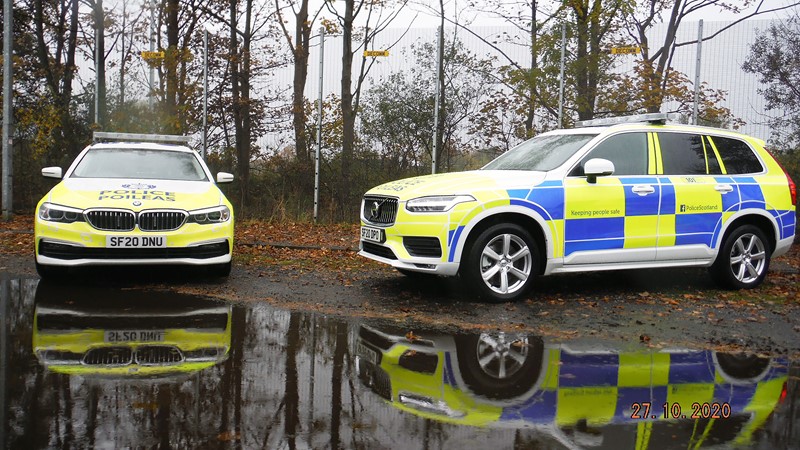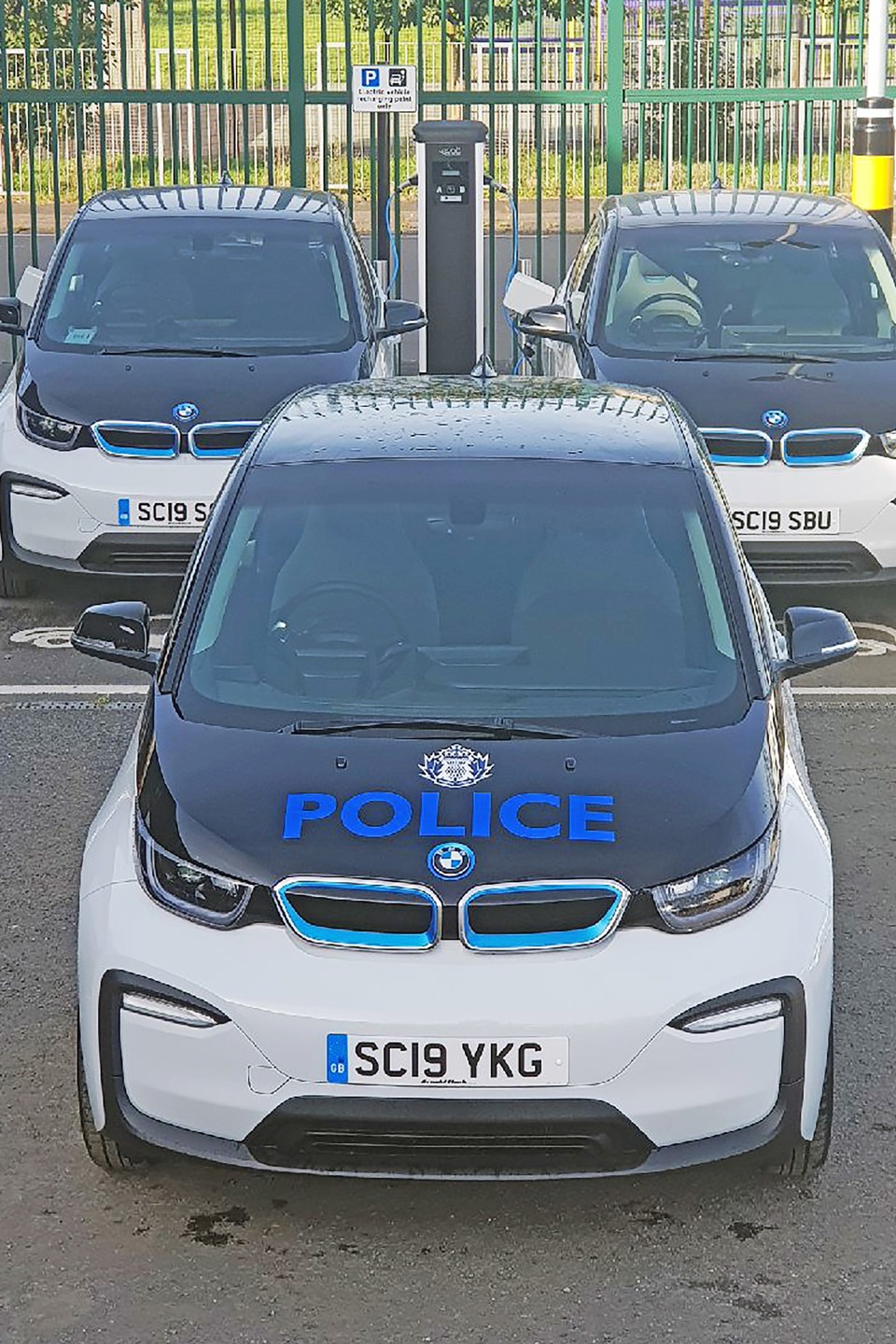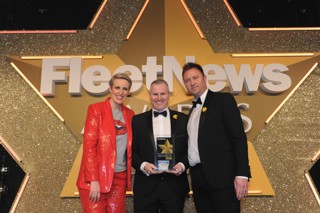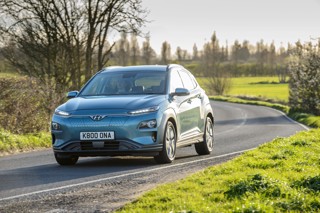Think electric vehicles and the first image isn’t of police cars, sirens wailing, racing around on zero-emission operations.
Despite nationwide emissions and air quality pressures, few of the UK’s 45 police forces have made any serious in-roads into ultra-low emission alternatives to petrol and diesel, even for their lower mileage, unmarked general vehicles. This was highlighted by the most recent Fleet200 survey, where just two of nine police fleets reported having EVs on their fleets.
But that isn’t the situation at Police Scotland. In mid-2019, fleet manager Stewart Taylor and head of fleet Tony Chalk began putting together a new strategy that would enable them to improve their current fleet while implementing a long-term plan to ensure it remained fit for purpose – a “21st century police service”, according to chief constable Iain Livingstone. Electric vehicles will have a starring role.
Crucial to the strategy was the engagement of key stakeholders, from drivers to senior executives. The fleet team took the unusual step of removing itself from the process, getting another department to gather feedback from drivers about the things they wanted improving.
“We can sometimes get bogged down in the solutions rather than simply listening to their views, so we created independent forums with no interruptions from fleet that were both face-to-face and via online surveys,” explains Taylor, who was named Fleet News Awards 2020 fleet manager of the year back in March.
He estimates around 90% of the feedback raised issues already familiar to the fleet team, but the sessions did uncover some useful insight, such as the problems caused by taking vehicles off the road for minor repairs when the force didn’t have a big enough contingency fleet.
“That helped us to put some quick wins in place,” Taylor adds. He has already increased the number of vehicles held in reserve from 2% of fleet to 4%, with a target of 5% by the end of the year.

Stewart Taylor (centre), fleet manager, Police Scotland, collected the Fleet Manager of the Year trophy from Chris Woods, head of enterprise sales at award sponsors Trakm8. Looking on is awards host Steph McGovern
Strategy sign-off
The strategy was signed off by the senior police team – and ultimately the Scottish Government – in November 2019 and was launched in April.
“There are two parts to the plan: improving our current fleet and having a long-term strategy of where we need to be,” says Taylor.
Improvements to the current fleet was primarily centred on car and van replacement cycles.
Historically, the Police Scotland operated a fixed five-year/150,000-mile cycle which caused reliability issues on higher mileage vehicles, resulting in more time off-road and higher service, maintenance and repair (SMR) costs, while lower mileage vehicles didn’t get close to the contracted terms before they were replaced.
The rapid response fleet will now be replaced after four years/120,000 miles, while the unmarked general purpose fleet will extend to eight years/120,000 miles. All vehicles are still purchased.
Essentially, mileage now dictates the replacement cycle for cars and vans, based on wholelife cost calculations, with the savings made from keeping the unmarked vehicles for longer enabling the force to replace the bluelight fleet sooner, improving availability. The target is 98% of vehicles available at any one time, up from 96% today.
Taylor also anticipates halving the SMR costs, saving around £2.5 million a year.
“The process was straightforward because we asked the organisation what it wanted,” he says. “It’s about getting the most from the funding we have and also improving the standard of the vehicles for frontline officers.”
Extending the general purpose cars’ replacement cycle to eight years was the biggest challenge – “they are job-need, but it’s still an emotive subject” – but through user groups and intranet comms, Taylor was able to explain the criteria and the reasoning, and it was quickly accepted.
The biggest part of the new strategy was looking to the future and the type of fleet Police Scotland wanted to operate. A significant motivation was the need to reduce carbon emissions, not least to mirror the Scottish Government’s own aspirations for a cleaner environment.
The Government is the source of Police Scotland’s funding and it would ultimately sign off the new plans.
“It was important for us to tie in with Government, but also our own policing priorities, including our estates strategy regarding changes to buildings, and our IT strategy to understand what it means for the vehicles,” Taylor says.
“We quickly realised there was no point writing a 10-year strategy based on internal combustion engines (ICEs). We did think about a three-year strategy, but that also seemed a bit pointless, so it’s a 10-year plan that we assess every year” Stewart Taylor
The strategy strapline concisely sums up the aspiration: to be ultra-low emission by 2030 for all vehicles. This would cut carbon emissions by 61%, from almost 16,000 tonnes a year to 6,257 – these would not be from the vehicle, but emissions from the additional electricity required to charge the vehicles.
Taylor recognises that not everything is within his control. It will take a substantial amount of funding, but also relies on the technology, the manufacturers and the charging infrastructure.
“We need to deliver the strategy in a way which doesn’t affect our ability to police, especially response policing,” he adds.

Perfect fit for electric
For that reason, the first action is to convert the unmarked fleet, consisting of around 1,600 vehicles (45% of the total 3,620 car and van fleet), to ultra-low emission vehicles.
Typically travelling fewer than 100 miles a day, these cars are a perfect fit for full electric – Taylor’s preferred option.
He explains: “We have demoed hybrid, PHEV and EV and the appetite from the business and the end-user is for full electric. We see electric as more appropriate for a job-need fleet such as ours.”
The range of the latest models, including the likes of Hyundai Kona (Taylor has just placed an order for 180) is around 250-260 miles real-world, which means they don’t have to be plugged in every day. Charging takes place at the office, supplemented by the public charging infrastructure.
The Konas will take Police Scotland to 350 EVs, with every unmarked car due to be replaced when it comes off fleet over the next four-to-five years. At that point, Taylor will start to look at his marked vehicles with an expectation that technology improvements in range and shorter charging times will bring them within scope of the rapid response fleet.
“We’ve gone from zero to 10% of the fleet within 12 months and are on target for half the fleet to be electric by year five of the strategy” – Stewart Taylor
“At that point, our research suggests that the technology will be ready for us to start moving our rapid response to electric. We are in the hands of the manufacturers, but I’m confident it won’t be an issue.”
The milestone is range of around 400 miles, but that has to be supported by an appropriate charging infrastructure coupled to an ability to charge in a shorter time, ideally 10-15 minutes for a “meaningful boost” during the day.
Police Scotland has a little more than 30 charge points across its estate of 265 stations, sufficient capacity for its current number of electric vehicles. It is about to start expanding that network and last month signed a £21 million deal with BP Chargemaster to install more than 1,000 chargers, including 35 120kW ultra-fast chargers.
It will continue to be a member of ChargePlace Scotland, giving it access to a further 1,000 charge points, and works closely with Scottish Government and local authorities to ensure the network strategy is right.
Wholelife cost modelling
An important element in the strategy document is funding. Police Scotland uses wholelife cost modelling which shows that EVs are “just a few percentage points” more expensive that petrol and diesel based on today’s prices.
However, the financial budgeting gives electric the edge in years two, three and four of the strategy, as manufacturers switch their production priorities to EV and costs, inevitably, come down.
Those costings are based on identical replacement cycles to ICE, but this will be under constant review as potential battery degradation is assessed as well as maintenance and reliability.
“Decisions on fleet should almost always come down to wholelife costs, but our vehicles also have to be fit for purpose and safe,” Taylor says. “Sitting across it all is our ULEV strategy.”
Taylor on … the vehicle as an office
The Police Scotland fleet strategy embraces the fact that the vehicle is now an officer’s office. The roll-out of mobile working devices means they have the capacity to work from the vehicle rather than return to the station.
Crucial to this understanding was the links the fleet team has to the estates and IT teams, as well as the feedback it received from the focus groups.
Officers would be spending more time in their vehicles so they would have to be comfortable and practical from an ergonomic perspective; the vehicle would also have to accommodate tablets and other communication devices. It would require the right equipment to meet operational needs.
“This is changing our vehicle specs; we now have the infotainment systems, navigation, charge point information,” says Taylor.
The fleet team will continue to identify suitable equipment which is lighter and will free up capacity within vehicles. Meanwhile, regular risk assessment reviews will ensure the health and safety of staff is prioritised.
But it isn’t just about the vehicle; it’s also about how the fleet is delivered to the end user by making information available without having to go through the fleet team.
“We have revamped our intranet site, adding everything drivers need to know, such as fuel card information, details on EVs, telematics and videos as well,” Taylor says. “It’s still a work in progress, but it will be finished early next year.”
Mobile workshops
Police Scotland operates three main workshops in Aberdeen, Edinburgh and Glasgow, with six supporting local workshops in Stirling, Inverness, Motherwell, Fife, Dundee and Dumfries.
It is now investigating a hybrid model of fixed and mobile servicing and repairs to minimise downtime time, which includes the time it takes to travel to a workshop.
“This has been difficult for fleets like ours because of the combustion engine and all the components that you have to work on,” says Stewart Taylor. “But electric vehicles have fewer moving parts and that will help to support a mobile workshop strategy.”
Police Scotland has already carried out trials and is likely to begin rolling out its hybrid model next year, with smaller, routine maintenance carried out by the mobile network.
The service could also be expanded to include other bluelight fleets as well as local councils; Police Scotland already has some reciprocal agreements in place, extending from SMR to the EV charging infrastructure.
Measures of success
Effectiveness
* Officer and staff satisfaction
* Bluelight partnership satisfaction
* Fleet Services team satisfaction
* Workshops productivity
* Reduction in CO2 emissions
* Access to a contingency vehicle
* Lower average age of the fleet
Efficiency
* Wholelife cost of a vehicle
* Maintenance costs
* Vehicle utilisation
* Vehicle downtime
* Benefits from strategic partnerships
* Revenue savings generated























Login to comment
Comments
No comments have been made yet.